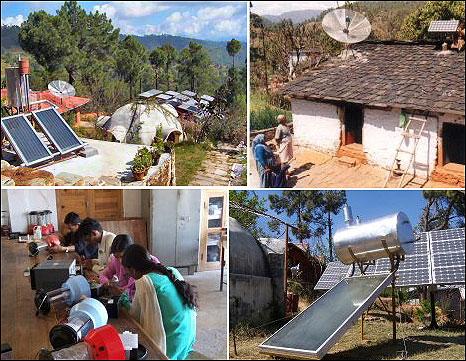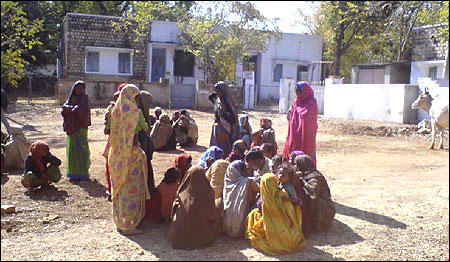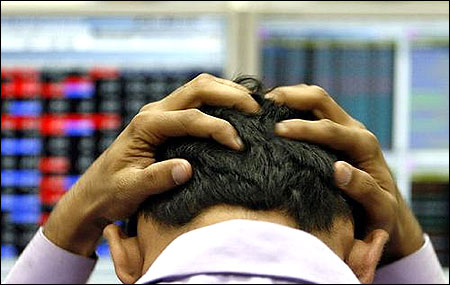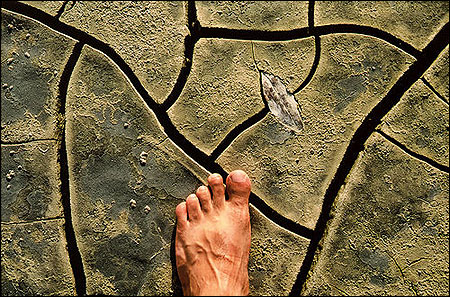Rajni Bakshi
Over the last twenty years it has even more passionately been argued that the future of India depends on rapid expansion on four fronts, writes Rajni Bakshi.
A brilliantly innovative rural woman entrepreneur was honored with the 19th Jankidevi Bajaj Award in Mumbai last week. Such awards are usually a celebration of altruistic social work that happens in little corners of the society.
But there is a greater need to ask in what ways these success stories are relevant for the economy as a whole.
Rashmi Bharati, this year's winner, has revived a traditional craft of weaving and natural dyeing in the Kumaon hills of Uttrakhand. Avani, the enterprise that Bharati co-founded with her husband, is doing value addition for the local mulberry bushes which were otherwise being harvested and taken long distance for sericulture elsewhere in the country.
Village level innovation: The next big thing
Avani's work is closely akin to the village industries visualized by Mahatma Gandhi and promoted by his co-workers like Jankidevi Bajaj, wife of the industrialist and philanthropist Jamnalal Bajaj.
Since Independence we have fallen into the habit of celebrating such ventures as something that must necessarily happen on the fringes of the modern economy - but are not particularly relevant for growing the Gross National Product (GNP).
Village level innovation: The next big thing
Over the last twenty years it has even more passionately been argued that the future of India depends on rapid expansion on four fronts: modern industrial production; assimilation with global money markets; celebrating the primacy of money profits; inclusion of the entire population into this ethos.
In this context, the Gandhian emphasis on simplicity and thoughtful, rather than manic, consumption has been rejected as being backward.
And yet it is possible that our future is unfolding quite outside this stereo-typed contrast of traditional vs. modern, handicrafts vs. mass production, Gandhian vs. Wall Street.
Village level innovation: The next big thing
There is now a subtle movement towards a more wholesome view of what it means to be a player in the marketplace.
Yes we tend to be greedy in some situations but greed is not necessarily our most defining characteristic.
As we all know from every day life experiences - we are all simultaneously greedy and generous, competitive and cooperative, harsh and compassionate.
These different facets of our nature are brought forth to varying degree - depending on the social, economic and cultural structures within which we find ourselves.
Village level innovation: The next big thing
Enterprises like Avani manifest this in multiple ways.
Their sericulture and weaving ventures are fostering ecological regeneration, enhancing skills at the village level in ways that are generating livelihoods for women and all this is creating products of great beauty as well as monetary value.
In 2007 Avani was awarded the UNESCO seal of excellence for quality, uniqueness and eco-friendly practices.
But such good work has been done at the micro level for many decades, without in any way changing the larger picture.
So how does Rashmi Bharati's work offer a glimmer of possible change at a larger level?
Village level innovation: The next big thing
Here are just a few reasons why:
The ongoing global financial crisis combined with the accelerating ecological crisis has shaken the confidence that many people had in a greed based model of growth and prosperity.
More people are now looking about for other ways of being actors in the marketplace - thus the growing interest in concepts like Conscious Capitalism or Caring Capitalism.
There is pressure to replace the concept of Gross National Product with Gross National Happiness, as the Bhutanese call it.
Or Genuine Progress Indicators (GPI) as some American and Canadian social activists call it. If this is done then we would not be obsessed with merely measuring the value of goods and service generated and exchanged every year.
This data would be matched up with actual well-being generated. For example, in the GPI measure all pollution created and cleaned up is listed as a negative, that is, it is subtracted from the GNP.
Both acts of crime and crime prevention are also listed as a minus.
Village level innovation: The next big thing
Technology has firmly put us in an era in which industrial models of the 20th century - which gave rise to centralised forms of production and thus large concentration of assets.
The combination of the internet and cell phones is just one example of how 21st century technologies lend themselves to decentralised innovation, production and communication. Production by the masses, rather than mass production, is now more viable than even in Gandhiji's times.
Socially Responsible Investing is now an over $3 trillion industry globally.
This may seem small compared to the overall scale of global finance but it has created more than a glimmer of hope about expanding a market culture in which profit is not just measured in money but also in the quality of social and environmental value that has been generated.
Village level innovation: The next big thing
This does not mean that we are on the threshold of a dramatic and hopeful transformation.
The old order -- which rests on the belief that human dynamism is best tapped by letting greed flourish - is alive, well and kicking. It will not simply fade away over night.
But change does not happen by denying what actually exists or even by raving and ranting against it.
Change happens by creating the next thing.
Village level innovation: The next big thing
This is why endeavors like Bharati's are so deeply important.
We would do her and Avani and hundreds of others like them a gross injustice if we view them fondly and affectionately as little lights on the side, as charming bit players in the larger drama of life.
Bharti and Avani are crucial to our future because they are one of the many possible faces of the next big thing - an enterprise that simultaneously fosters ecological renewal, cooperation, livelihood generation, dispersed asset accumulation and an unfurling of human creativity.










article